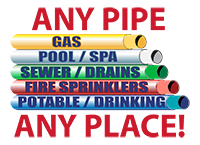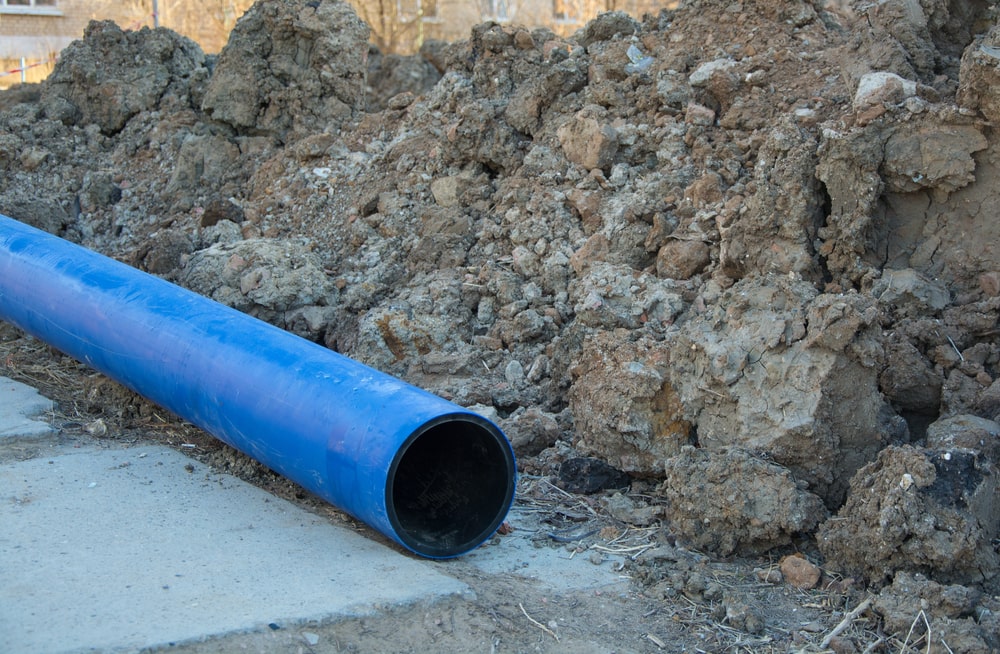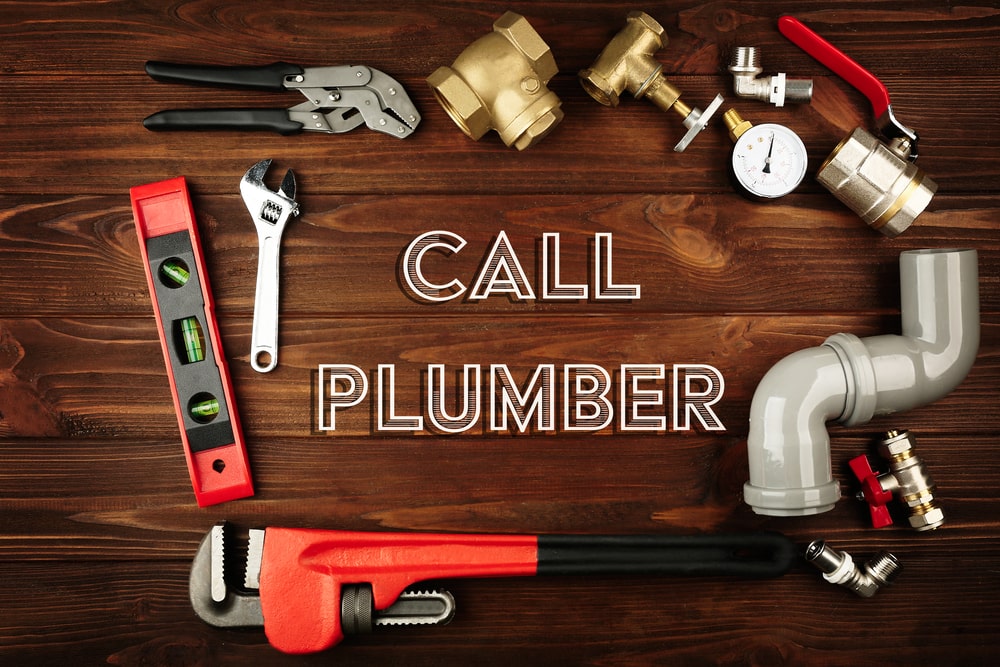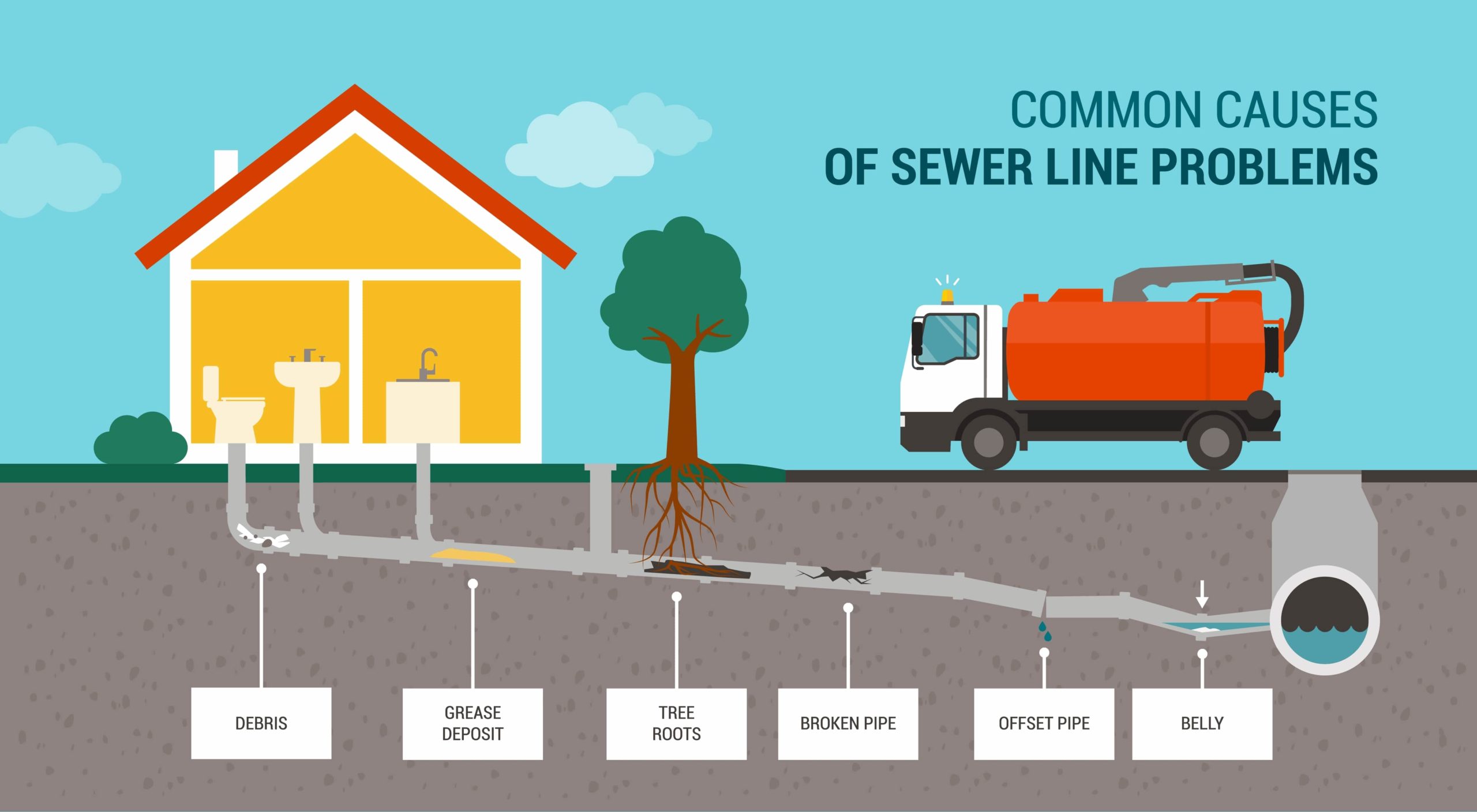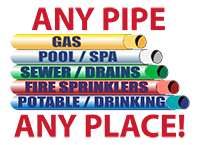If you’re lucky enough to never have experienced a sewer line backup, consider yourself among the fortunate. But if you have had the unfortunate experience of a clogged sewer line, you know just how messy and smelly it can be. And if you’re a homeowner, you also know that repairing a sewer line can be costly.
Fortunately, there are some steps you can take to repair a sewer line without having to call in a professional. In this article, we’ll walk you through the basics of how to repair a sewer line. We’ll cover everything from clearing a clog to fixing a cracked pipe. So if you’re ready to get your hands dirty, read on!
9 steps to take to repair your sewer line
-
Recognize the signs of a clogged sewer line
The first step to knowing how to repair a sewer line is to confirm it needs repair by identifying the common signs of sewer line blocks.
If you notice any of the following signs, you may have a clogged sewer line:
- Water backs up out of drains or toilets
- Sinks or tubs draining slowly
- Toilets take longer to flush
- Sewage overflowing from a cleanout
- Bad smell coming from the drains
- Your lawn or backyard has soggy patches or pools of water
- Flooding septic waste
- Persistent gurgling sounds in the drains
-
Understand what causes sewer line damage
Sewer line repairs and replacements can get costly, particularly if they are a recurring problem. Before you get into the actual repairs, knowing the common causes behind sewer line clogs and damage will help you take preventive action. Knowing the cause of the sewer line damage is also important to know what tools and methods you should employ to repair the line.
A sewer line is a common pipe that is used to transport wastewater from a home or building to a septic tank or municipal sewer system. Over time, these pipes can become clogged with grease, hair, soap scum, and other debris. This can cause wastewater to back up into the home or building, which can lead to health hazards and costly repairs.
There are a few reasons why a sewer line may become clogged.
- Flushing grease and other solids down the toilet – It is important for homeowners to know what can and cannot be flushed down the toilet. Right from grease and solids, to sludges and untreated biohazardous waste, there are many things that clog the sewer line.
- Fats, oils, and grease can build up on the inside of the pipe and eventually cause a blockage. This is often caused by homeowners pouring grease down the drain or by food establishments dumping large amounts of grease into the sewer system.
- Hair can also accumulate in the pipe and cause a clog, especially if there is a lot of it.
- Soap scum, paper products, baby wipes, eggshells, and fibrous vegetables can also contribute to clogs in the sewer line.
- Oil, grease, and fats combine with objects such as baby wipes and minerals in the sewer line to form a hard material called ‘fatberg.’ In fact, a 2000-pound ‘fatberg’ was found in a city’s sewers not too long ago.
- Tree roots –Tree roots can cause extensive damage to sewer lines. They can grow into the pipes and block the flow of sewage, and can even break the pipes.
- Sagging –Sewer lines can sag for a variety of reasons, including improper installation, changes in the soil type, ground movement, and corrosion. Uneven soil or ground conditions can also cause a section of the sewer pipe to sink. Waste material starts to collect at the sagging spot, leading to recurring backups, leaks, and blockages.
- Aging pipes –If you have an older home, it’s likely that your sewer line is made of cast iron or clay. These materials were commonly used in the past, but they are now considered outdated. Over time, these materials can degrade and break down, which can cause serious problems for your sewer line. Older sewer lines may also lose their protective coating that helps prevent corrosion of the pipes and extend their lifespan.
-
Schedule a professional sewer line inspection
Sometimes, to an untrained eye, it can be difficult to determine the exact cause of the sewer line blockage or damage. Before you undertake an extensive repair or replacement, it is always a good idea to schedule a professional inspection of the sewer line.
Here, it’s important to call the most experienced professional plumbing and pipelining service providers in San Diego who offer investigation services.
They will use a color sewer camera to identify problems in the sewer line such as collapsed sections, blocks, and cracks. They will also check the condition of the pipes to determine if the sewer lines need a repair or a replacement.
-
Determine if the sewer line can be repaired or needs a replacement
If the problem is just one clogged sink or toilet, you can attempt to clear it by using a snake or a plunger.
These tactics may also work if you notice a slowly-flushing toilet for the first time. Isolated incidents such as these are typically signs of a single sewer line clog. If you want to know how to repair a sewer line using a plumbing snake, follow these steps:
- Find the clean-out fitting -A part of this pipe should be visible and is typically found on level ground or the lowest floor.
- Loosen the cover slowly – You can unscrew the plug cover of the clean-out fitting using a wrench. Avoid completely opening the cover as debris can explode out of the opening. Once you loosen the cap, step away and wait for the waste build-up to spill out of the opening.
- Insert the plumbing snake -Once the spill-out stops, insert the snake into the clean-out fitting. Follow the instructions to remove the clog. Depending on the extent of the clog, you may need to do this repeatedly.
- Flush it with water -Use a hose to flush the sewer line with water. This will help dislodge any leftover clogs or debris in the drain and on the plumbing snake.
These methods may work when you notice a clog in a single drain. But how to repair a sewer line if there are multiple or recurrent clogs? Multiple or repeated clogs indicate a problem with the main sewer line.
A major sewer obstruction due to tree roots, uneven ground, or an old sewer system is a major issue. This is not suitable for a DIY project, but instead, warrants a call to the professionals.
-
Call your local plumbing experts
When you need plumbing assistance in your home or business, it is important to know what to look for in a professional plumbing company. With so many options available, it can be difficult to choose the right one.
First, be sure to check that the company is licensed and insured. Apart from checking reviews and testimonials from other customers, you need to check if the plumbing company is experienced in handling complex sewer line issues in San Diego.
In addition, confirm if they offer emergency plumbing services at no extra dispatch fee or costs.
While you wait for the plumbing professionals to arrive, you can take immediate steps to avoid any damage to your property and protect your health arising from sewer backup.
-
Take steps to minimize damage
Right from destroying valuables, and creating electrical malfunctions to raising the risk of mold growth, sewer backups can lead to serious damage and inconvenience.
Prompt cleanup can help you minimize the damage. Depending on the extent of the backup, you can take these steps:
- Wet-vacuum the area or remove the spillage as much as you can
- Use soap and disinfectant to mop and wipe floors and walls
- Remove any wet drapes or carpets and steam clean them
- Remove any damp or damaged wall covering or wallboard
-
Decide between open trench versus trenchless repair
There are two methods that plumbing and pipelining experts typically use to repair a sewer line: open trench and trenchless.
The open trench method is not only a time-consuming process but can be disruptive to your landscaping and may require the replacement of paved surfaces. This is because the sewer line needs to be completely exposed in order to be repaired.
Trenchless sewer line repair is a technique that has been gaining popularity in recent years. This type of repair involves minimal digging and can often be done without having to excavate the entire sewer line. This can save a lot of time and money, and it is much less disruptive to the surrounding area.
This is the preferred way to fix leaks, cracked pipes, and other damage to sewer lines. Apart from faster and more accurate results, this method is devoid of mess or excessive noise.
There are many methods of trenchless repair of sewer lines, including:
- Slip lining
- Spray lining or brush coating
- CIPP (Cured in place pipe) lining
- Pipe bursting
Pipe bursting is a method of repair in which a new pipe is installed by breaking up the old pipe and pushing the new pipe through the old pipe’s path.
Slip lining is a method of repair in which a new smaller pipe is installed inside the old, damaged pipe. This lining forms a new pipeline within the old pipe, providing a new surface for wastewater to flow through.
CIPP lining involves inserting an epoxy resin liner into the sewer’s damaged area, inflating and heating it to allow it to cure in place.
Brush coating is a technique where a flexible polymer layer is inserted into the damaged pipe. The coating sets gradually to seal any cracks.
Your San Diego plumbing and pipelining professionals will determine which method to use based on the type and extent of sewer line damage.
-
Hydro-jetting and abrasive cleaning
Plumbing professionals will also determine if there is a need to use abrasive cleaning or hydro-jetting to clean the pipe. Hydro-jetting removes tree roots and grease by spraying water at a pressure level between 1,500 to 4,000 PSI.
Abrasive cleaning involves using abrasive honing brushes in the pipe to remove corrosion.
Abrasive cleaning may typically be required if the sewer pipes are made of cast iron that are prone to rust and corrosion.
-
Take preventive measures
The most important part of knowing how to repair a sewer line is knowing how to prevent problems from occurring. One preventive measure you can take is to install a grease trap or grease interceptor that collects fats, oil, and grease (FOG). Grease and fats are the most common causes of sewer line blocks.
However, a wrongly installed grease trap or an improperly sized grease trap can contribute to the problem instead of being a solution. A recommended way to maximize the protective effect of a grease trap is to ensure a high-quality unit is installed by your San Diego professional plumber.
In addition, you can take these preventive measures to extend the lifespan of the sewer line:
- Remove trees close to the sewer line—Root invasions are caused typically by existing damage or crack in the pipe. However, after repairing the sewer line, you can remove any tree in the vicinity to prevent tree root growth.
- Avoid disposing of things that clog the sewer—Other than toilet paper and human waste, avoid disposing of things that can potentially clog the sewer line.
Most importantly, schedule regular inspections of the sewer line from a professional to prevent major problems.
Schedule regular sewer line inspections with San Diego Plumbing And Pipelining Today!
A cost-effective way to ensure your sewage line remains free of blocks and damage is to hire a professional in San Diego to conduct regular inspections. Find plumbing companies that offer a color camera inspection to identify all types of cracks, blocks, and damages.
If you find that your sewer line is not functioning properly, it is important to take immediate action to repair it by calling a plumbing professional.
At San Diego Plumbing and Pipelining, we have the cutting-edge tools and experience necessary to repair and maintain your sewer line in peak condition. Get in touch with us for sewer line repairs and replacement.
